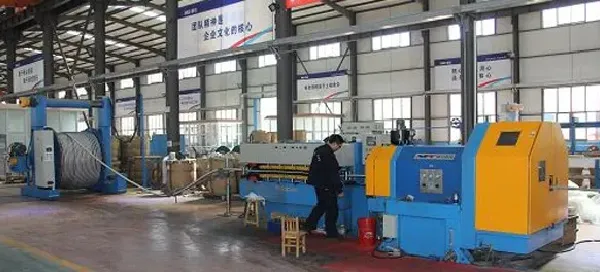10 月 . 21, 2024 06:13 Back to list
Flange-End Butterfly Valve Features and Benefits for Industrial Applications
Understanding Butterfly Valve Flange Ends A Comprehensive Overview
Butterfly valves play a critical role in various industrial applications, functioning as a mechanism to regulate or isolate the flow of fluids. Among the elements that influence their performance, the design and construction of the flange ends are paramount. This article delves into the significance of butterfly valve flange ends, the factors to consider during selection, and the advantages they provide in fluid control systems.
What is a Butterfly Valve?
A butterfly valve is a quarter-turn valve that uses a circular disc to control the flow of fluid. The disc is mounted on a rotating shaft, and when the valve is in the open position, the disc aligns with the flow of the fluid, allowing it to pass through. Conversely, when closed, the disc obstructs the flow, effectively sealing the passage. Butterfly valves are commonly used because they offer a compact design, requiring less space compared to gate or globe valves, and they are suitable for both high flow rates and low-pressure applications.
The Importance of Flange Ends
The flange end of a butterfly valve is where the valve connects to the piping system. It consists of a flat piece of metal with holes for bolts, enabling the valve to be securely fastened to the pipeline. The quality and design of the flange ends influence several operational aspects, including leak-tight sealing, ease of installation, and durability under varying pressures and temperatures.
Types of Flange Ends
1. Flat Flange Ends The most common design, flat flanges provide a simple and effective means of connection. They are typically made from materials like carbon steel or stainless steel and can easily accommodate standard bolt patterns.
2. Raised Face Flange Ends This design features a raised area around the bolt holes, creating a better sealing surface. Raised face flanges are often preferred in high-pressure applications where enhanced sealing capabilities are required.
3. Socket Weld Flange Ends Socket weld flange ends are used for piping systems that require a more robust connection. The pipe is inserted into the socket, making the assembly stronger and less prone to leakage.
4. Lugged Flange Ends These have integral lugs that allow for the direct bolting of two butterfly valves together or to the adjacent flanges without the need for a separate flange. This design is particularly useful in situations where segments of a pipeline may need to be easily removed for maintenance.
Considerations for Selection
butterfly valve flange end

When selecting a butterfly valve with flange ends, several factors must be considered
1. Material Compatibility Choosing the right material based on the fluid type is essential. For example, corrosive fluids may necessitate the use of stainless steel or specialized alloys to resist degradation.
2. Pressure and Temperature Ratings The valve must be rated for the maximum pressure and temperature it will encounter in the application. Ensure that the flange ends are compatible with these ratings to avoid failures.
3. Standardization It's important to select flanges that conform to industry standards such as ANSI, API, or ASME. This ensures compatibility with existing piping systems and facilitates easier maintenance.
4. Size and Fit Verify that the valve size matches the pipeline dimension. Proper alignment and fit between the flange ends and the pipe are critical to prevent leaks and ensure optimal performance.
Advantages of Using Butterfly Valves with Flange Ends
1. Space Efficiency Butterfly valves with flange ends require less space than other valve types, making them ideal for applications with limited room.
2. Cost-Effective Their design and material efficiency often lead to lower manufacturing costs, making them a cost-effective solution for many fluid handling systems.
3. Ease of Maintenance The flange end design allows for straightforward installation and removal, facilitating maintenance and reducing downtime.
4. Versatility Butterfly valves with flange ends can be used in various applications, from water treatment to chemical processing, due to their adaptability and range of sizes.
Conclusion
Butterfly valve flange ends play an essential role in fluid control systems, from ensuring secure connections to contributing to the overall efficiency and reliability of the valve. Understanding their design, selection criteria, and advantages can help engineers and operators make informed decisions, ensuring optimal performance and longevity of their piping systems. With the right butterfly valve and appropriate flange ends, industries can achieve effective fluid regulation and isolation, thereby enhancing operational efficiency.
Share
-
Understanding the Differences Between Wafer Type Butterfly Valve and Lugged Butterfly ValveNewsOct.25,2024
-
The Efficiency of Wafer Type Butterfly Valve and Lugged Butterfly ValveNewsOct.25,2024
-
The Ultimate Guide to Industrial Swing Check Valve: Performance, Installation, and MaintenanceNewsOct.25,2024
-
Superior Performance with Industrial Swing Check Valve: The Essential Valve for Any SystemNewsOct.25,2024
-
Industrial Swing Check Valve: The Ideal Solution for Flow ControlNewsOct.25,2024
-
You Need to Know About Industrial Swing Check Valve: Functionality, Scope, and PerformanceNewsOct.25,2024